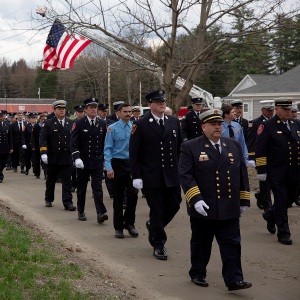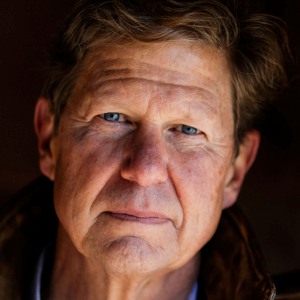Column: The Men Killed on a Single, Bloody Day in Vietnam, and the Haunting Wall That Memorializes Them
| Published: 05-25-2018 10:20 PM |
John H. Anderson Jr. had just turned 20 years old when he arrived in Vietnam on the last day of April in 1968. Like so many of the 500,000 Americans who served in Vietnam in 1968, he’d been drafted.
The young soldier, who lived in Wellsville, Pennsylvania, arrived in Southeast Asia at a moment of peak violence. The communists had launched a May offensive, also known as mini-Tet. American generals were aggressively pushing a counteroffensive.
May 1968 would turn out to be the bloodiest month of the bloodiest year for Americans in Vietnam.
Pfc. Anderson served in the 1st Battalion, 508th Infantry, 82nd Airborne Division, and was soon engulfed in fighting in the northern part of the country, near the ancient imperial capital of Hue. He survived less than four weeks. He was killed in a place named Nui Ke, known as Hill 618.
At the Vietnam Veterans Memorial in Washington, Anderson’s name is the first one visitors see as they approach the west side of the iconic black wall. If they come from the east, the first name they encounter belongs to Jessie C. Alba, a sergeant from Port Lavaca, Texas, who served in the 101st Airborne Division and was killed near Hue in a mortar attack.
Alba was engaged to be married, and his fiancee, Mary Ann Lopez, once penned a tribute to him online. “Even now,” she wrote, “after so many years past, I still think of him and what our lives, could of been.”
She visited the memorial in 1996 at night. “It was so overwhelming for me,” she remembered. “The wall is so huge and very scary, in a way. I finally found his name, and how ironic it was that his name is the last one, almost all by itself at the end.”
Article continues after...
Yesterday's Most Read Articles
 Crowd turns out to honor late Ascutney Fire Chief Darrin Spaulding
Crowd turns out to honor late Ascutney Fire Chief Darrin Spaulding
 Former principal of South Royalton School released from prison
Former principal of South Royalton School released from prison
 Pick a sport and Pete DePalo’s has probably officiated it over the past 40-plus years
Pick a sport and Pete DePalo’s has probably officiated it over the past 40-plus years
 Upper Valley residents among advocates for NH aid-in-dying bill
Upper Valley residents among advocates for NH aid-in-dying bill
 NH man convicted of killing daughter, 5, ordered to be at sentencing after skipping trial
NH man convicted of killing daughter, 5, ordered to be at sentencing after skipping trial
Like Anderson, Alba was 20 years old. Anderson and Alba had something else in common: Both were killed on May 25, 1968, half a century ago.
The midpoint of the war, as measured in the 58,000 American lives lost, is how visitors encounter the wall. Architect Maya Lin conceived of the wall when, as a senior at Yale working on a class project, she visited Washington and saw the site of the proposed Vietnam memorial.
“I had a simple impulse to cut into the earth,” she wrote in The New York Review of Books. “I imagined taking a knife and cutting into the earth, opening it up, an initial violence and pain that in time would heal.”
She had another idea, also radical: The names would be chronological rather than alphabetical. That proved controversial, like so much else about the design. Lin initially figured the chronology would be left to right when facing the wall, starting in 1959 and ending in 1975. But at a professor’s urging she changed the design to make the chronology of deaths begin and end at the apex, creating a closed loop.
The single most lethal day of the war for American troops was Jan. 31, 1968, when 246 personnel were killed or mortally wounded as the Viet Cong and North Vietnamese Army regulars launched the Tet Offensive.
But if you had to pick a random date to represent the U.S. combat experience in Vietnam, May 25 would be a defensible choice. It was a day of hard, relentless fighting all over South Vietnam, from the Mekong Delta to the demilitarized zone, and much of that combat has been overlooked by historians or overshadowed by more famous events such as the Battle of Hue or the siege of Khe Sanh earlier in the year.
Ronald Spector, a professor of history and international relations at George Washington University, remembers visiting a Marine base near the DMZ during his 1968-69 tour as a Marine corporal.
“During my brief unhappy stay there, because it was in artillery range, it used to be shelled right around lunchtime,” said Spector, author of After Tet: The Bloodiest Year in Vietnam. He said the high casualty rate in 1968 led to a great deal of fatalism day in and day out.
“You’re counting the days until you’re going home,” he said. “You wanted to accomplish the mission, whatever the mission was, and get back alive.”
The brutal May fighting was inextricably connected to the peace talks that had gotten underway in Paris. Both sides in Vietnam had intensified their efforts to inflict casualties, hoping to influence the talks.
The Viet Cong had suffered heavy losses in the Tet Offensive and the U.S. generals and the South Vietnamese government wanted to press their perceived military advantage and regain control of rural areas. Field commanders received an order to go all-out — “kind of a pep talk,” one military spokesman said in downplaying press accounts of the order.
Vietnam rarely had set-piece battles, but rather was seen by the U.S. as a war of attrition, with success measured in body counts and kill ratios. The U.S. had vastly superior firepower, including air dominance. But combat success for the Americans did not seem to sap the fervor of the communists, who saw this as a fight to the death against an occupying power.
“It is better to die than to be a slave. There is nothing more precious than freedom and independence,” North Vietnam’s president, Ho Chi Minh, told the National Assembly on May 24.
Those words about freedom and independence became famous — and could be seen decades later on billboards in Ho Chi Minh City (formerly Saigon), noted Meredith Lair, a George Mason University historian who teaches and writes about the Vietnam War.
She said the American war of attrition in Vietnam “involves this kind of aimless, open-ended campaign to inflict as much damage on the enemy as possible so that at some future point in time they give up,” including abandoning the idea of a unified Vietnam. “They were simply not going to do that.”
The U.S. inflicted heavy losses on the communists, but that didn’t translate into strategic success. As 1968 progressed, public opinion in the U.S. pivoted against the war.
“The enemy has not conceded defeat. There is no sense of geographic progress being made as in World War II. There is increasing concern on the home front that the war may not in fact be winnable,” said Gregory Daddis, a retired Army colonel and now a professor at Chapman University.
By May 1968, he said, with upward of 500 Americans dying every week in Vietnam, many Americans in the U.S. were asking: “Why are we still fighting? Why is the enemy not giving up? Why are we still being asked to sacrifice more?”
More Americans died in May — 2,403 — than in any other month of the war.
As for May 25, that brutal Saturday half a century ago, the names of the fallen go from A to Z, from Jessie C. Alba to Robert E. Zeske. There are 87 names in between.
Joel Achenbach writes about science and politics for The Washington Post's National desk.

 Editorial: Chris Sununu’s moral vacuum
Editorial: Chris Sununu’s moral vacuum Editorial: Gambling tarnishes America’s sporting life
Editorial: Gambling tarnishes America’s sporting life By the Way: A white nationalist’s many mistruths
By the Way: A white nationalist’s many mistruths Column: The age-old question of what to read
Column: The age-old question of what to read
